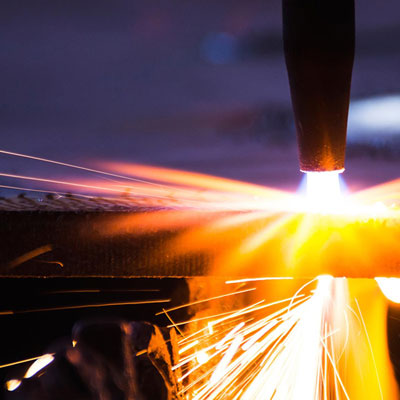One of the greatest challenges faced by aerospace, automotive, energy/power plant manufacturers and operators is how to reduce total life cost and reduce environmental impact of their products. This might be achieved by making these structures lighter, more durable, more reliable, cheaper to manufacture, maintain and recycle.
-
Structural Design, Analysis and Optimisation - assessment of manufacturing processes and performance of existing/new structures under relevant loading and environmental conditions and making recommendations for design improvements
-
Fluid-Structure Interaction - development and application of methods for analysis of fluid structure interaction problems including deformable structures and multiphase fluids
-
Fatigue and Fracture - practical methods for meeting and experimental assessment of the durability and damage tolerance requirements of modern structures
-
Fault Tolerance Design - metallic, composite and hybrid structures, optimised for dynamic (including impact resistance) and static loads and weight
-
Fault Detection and Health Monitoring - real time health monitoring of rotating structures for example turbine blades and bearings in order to prevent failures, manage maintenance and improve designs. Structural health monitoring and damage detection using built-in sensors and smart structure concepts
-
Crash and Impact Response - development and application of methods for modelling of structures and materials under extreme loading. Experimental characterisation of structures and materials under extreme loading. Design and development of impact resistant/crashworthy structures, for example aircraft ditching, bird strike, hard landing, hypervelocity impacts on spacecraft, ballistic impacts
-
Advanced and Composite Materials - design and manufacture of novel composites. Composites with improved through thickness properties and impact resistance. Simulation of manufacturing processes. Affordable composite materials. Thermal barriers and coatings. Design and manufacture of advanced coatings.
Our work encompasses a variety of flying structures including aircraft, helicopters, satellites, UAVS and missiles. As a result, our client list is extensive and includes AgustaWestland, Airbus, Airbus Military, AWE, BAE Systems, Boeing, Dassault, EADS, Astrium, F1 teams, JLR, Lockheed Martin, Marshall Aerospace, MBDA, MoD, Nissan, Rolls-Royce, Sprint Aviation, Surrey Satelites, Thales Alenia Space and Vega.
About our research
Our greatest strength is the ability to combine the academic rigour and long-term perspective of a university with the commercial and business focus of industry.
Our excellence in strategic and applied research has enabled us to make significant contributions to the world around us for over 60 years. We address real life challenges and focus on research that is of strategic and practical importance.
We provide a supportive research community for students and our academic work is regularly published in journal article, book or thesis form.
Working with us
Business can work with us on research of all scales from sponsorship of MSc student projects to exploratory studies extending over several years.
We have a wealth of facilities and resources at our disposal to provide tailored solutions to a variety of structural problems. We can provide structure design capabilities from preliminary to detailed (TRL1 to TRL6). An exciting part of our work involves exploring new structural concepts such as blended wing body for aircraft.
Commercial software packages, whilst readily available, cannot always provide managers with adequate information for assisting airframe and component management decisions for example inspection times to maintain airworthiness standards. We can develop and extend simulation tools and experimental techniques for testing and optimisation of structures and materials under static and dynamic loading.
• Linear and non-linear finite element methods
• Smoothed-particle hydrodynamics (SPH)
• Meshless methods
• New constitutive models
• New material characterisation techniques and sensors.
Our expertise in fault detection and health monitoring can inform how aerospace structures can extend their service life as well as meeting structural qualification standards for Aerospace, Automotive, Offshore, Energy and Defence.
Our facilities
We have vibro-acoustic monitoring solutions which can be used for condition monitoring and fault detection on structures such as jet engine turbine blades, wind turbine blades through the use of accelerometer for measurement.
We are able to conduct gas gun impact tests and our Hypersonic Gun Tunnel will soon be capable of testing for larger bird strike.
The range of single stage gas guns at Shrivenham can characterise energetic and inert materials for shock wave propagation.
The Cranfield Impact Centre focuses on the physical testing and development of products, structures and materials; the second is involved in the virtual testing and simulation of impact and crash scenarios.
Test facilities include:
• A Seattle Safety Systems dynamic sled rig capable of operating in both a direct barrier impact mode and in a deceleration pulse mode
• Three drop towers for the dynamic testing of materials and components
• A Tri-Function Hopkinson Bar and an Air Cannon for high strain rate materials testing
• A range of custom-made quasi-static test rigs for applying steady-state loads
• A range of standard tensile, compressive and shear test facilities for quasi-static testing.
